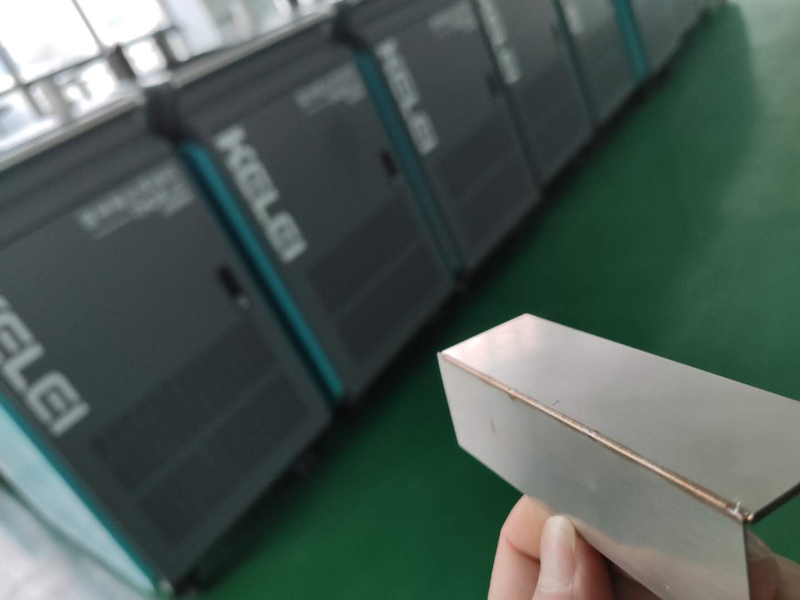At present, handheld laser welding machines have been widely used in the field of metal welding. In the traditional welding field, 90% of metal welding has been replaced by laser welding due to the laser welding speed being more than five times that of traditional welding methods, and the welding effect is far beyond the traditional argon arc welding and shielded welding. Laser welding in the welding of non-ferrous metals such as aluminium alloy has the advantage of the traditional welding method. Of course, in terms of welding metal materials, handheld laser welding machines also have some precautions.
The first step is to check that the shutter reflector is clean, as uncleaned lenses can be damaged during use, which will eventually lead to unrepairable failure. When the laser is ready to go after its completely tuned. With the development of laser welding technology, handheld laser welding technology is maturing and have been used in a range of industrial fields. However, in the process of daily production and use, due to various reasons, there will still be certain issues. Therefore, controlling and solving these issues that impact work efficiency is the top priority. Usually, we determine the cause of the problem by means of phenomena and control variables.
In general, there are two reasons for poor performance:
1. If there is a problem with the processing of the material, the faulty material should be replaced to achieve the desired result.
2. The setting of technical parameters requires continuous testing of the same components according to the welded product and discussions based on the results of the test.
In addition, laser welding has many advantages that traditional welding cannot match:
1. Safety. The torch nozzle will only start working when it comes into contact with metal, reducing the risk of misoperation, and the touch switch of the welding torch usually has a temperature sensing function, which will automatically stop working when it’s over-heated.
2. Any angle welding can be accomplished. Laser welding is not only efficient for conventional welds, but also has extremely high adaptability and welding efficiency in complex welds, large-volume workpieces, and irregularly shaped welds.
3. Laser welding can help maintain a clean working environment in the factory. Laser welding has less spatter and a more stable welding effect, which can greatly reduce the pollution inside the factory and ensure a clean working environment.

However, laser welding also has certain requirements in the actual application process, such as adopting a more friendly design for laser welding equipment, and improving and optimizing the sheet metal production process. Laser welding also has relatively high requirements for processing accuracy and fixture quality. If you want to give full play to the advantages of laser welding, reduce costs and improve efficiency, it is necessary to optimize the production process of sheet metal or other metals in actual production. Such as product design, laser cutting, stamping, bending, laser welding, etc., upgrading the welding method to laser welding, can reduce the production cost of the factory by about 30%, and laser welding has become the choice of more enterprises.
Difficulties of aluminium alloy laser welding:
1. Aluminum alloy has the characteristics of lightweight, non-magnetic, low-temperature resistance, corrosion resistance, easy forming, etc., so it is widely used in the field of welding. Using aluminium alloy instead of steel plate welding can reduce the weight of the structure by 50%.
2. Aluminum alloy welding is easy to produce pores.
3. The linear expansion coefficient of aluminium alloy weld is large, which is more likely to cause deformation during welding.
4. Thermal expansion is prone to occur during aluminium alloy welding, resulting in thermal cracks.
5. The biggest obstacles to the popularization and use of aluminium alloy are the serious softening of welded joints and the low strength coefficient.
6. The surface of aluminium alloy is easy to form a refractory oxide film (the melting point of A12O3 is 2060 °C), which requires a power-intense welding process.
7. Aluminum alloy has high thermal conductivity (about 4 times that of steel), and under the same welding speed, the heat input is 2 to 4 times that of welded steel as well. Therefore, aluminium alloy welding requires high energy density, low welding heat input and high welding speed.

Post time: Nov-10-2022






